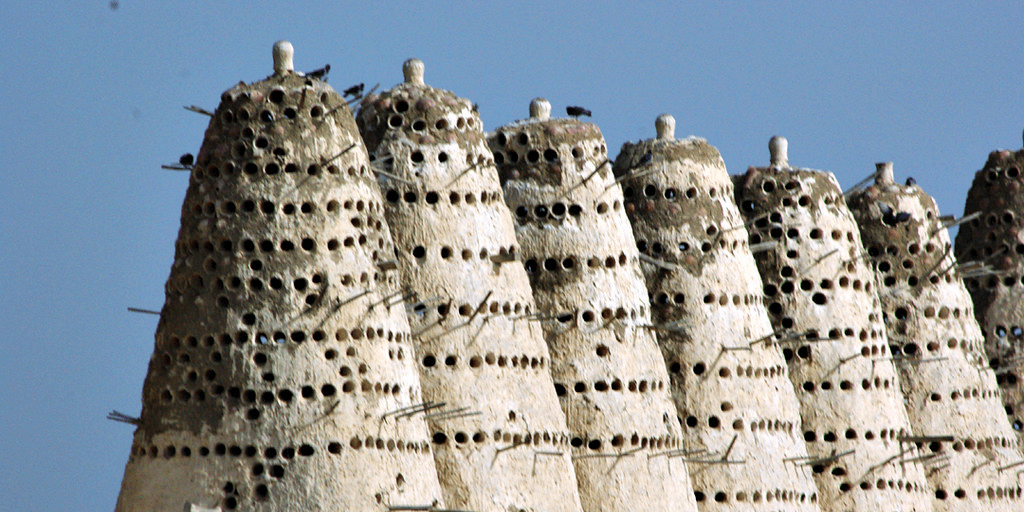Clay needles the horizon of many rural villages; unassuming structures, polka-dotted with nooks and nests and the song of Egyptian Swift pigeons. Otherwise known as dovecotes or pigeon houses, these “earthen chimneys” are one of Egypt’s signature sights, looming higher than the squat, red-brick buildings in their periphery. Used as a means for both farming and raising pigeons, dovecotes have featured in local history as far back as ancient Egypt. Between the need for manure for grain farming, and the staple addition of pigeon to the Egyptian diet, locales such as Mit Ghamer, and Roman-remains of Karanis have featured them in prolific numbers. Constructed from mud-brick, dovecotes are artificial formations that emulate mountainous topographies. On occasion, they are built sitting on the upper stories of houses, though the vast majority is a stand-alone, tower-like variety that varies in size, color, and type. Designed to allow air through, the spacious interior allows birds to fly through and nest comfortably. Over the centuries, they have become integral to Egyptian urban planning, particularly given the scarce nature of arable land. Although infamous as pests in other countries, Egyptians have a lingering fondness for…



